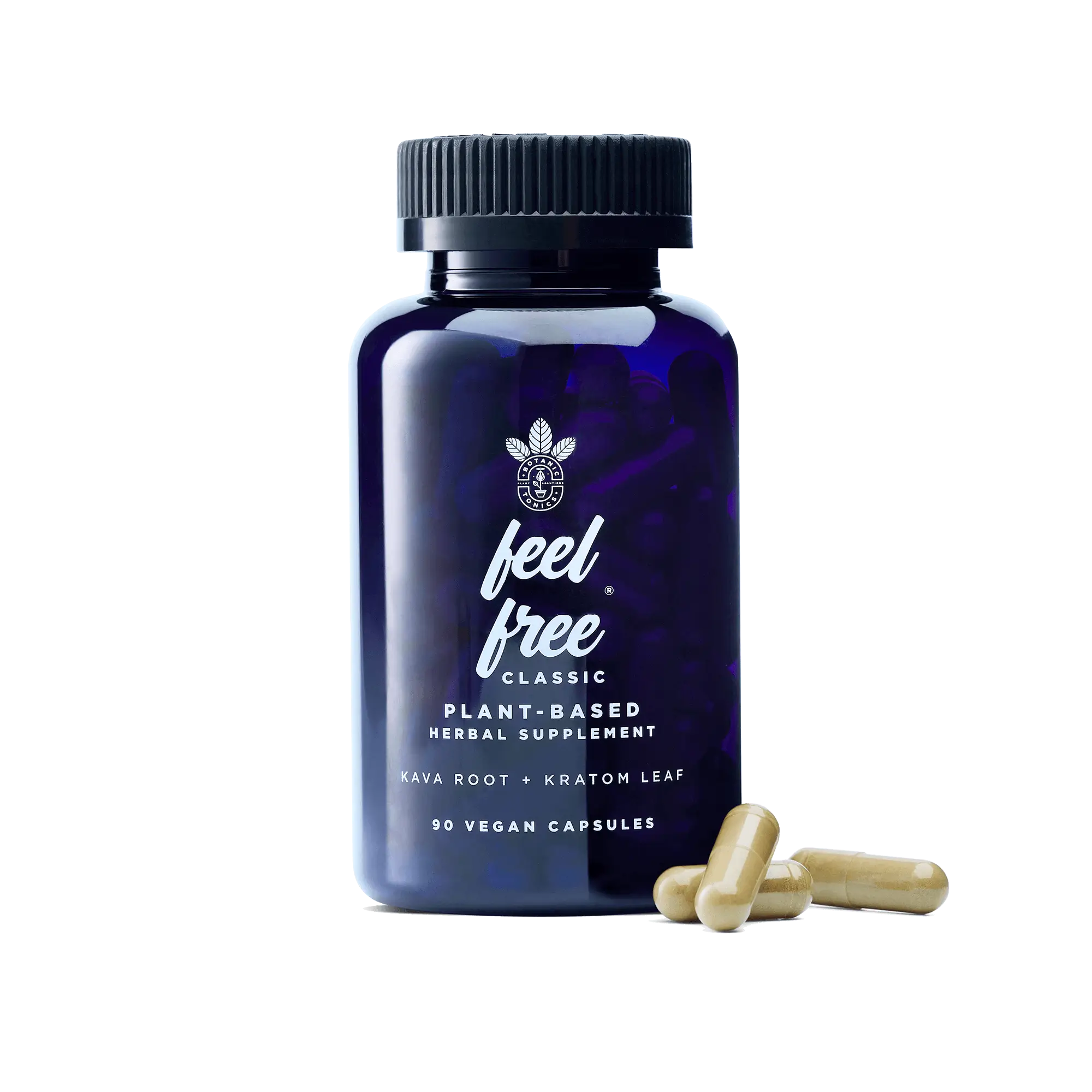Understanding Ayahuasca vs. Kava
With more people turning to holistic practices and plant medicine to combat stress, boost mood, and improve mental clarity, you may already know that ayahuasca and kava are all the rage. But what sets these two powerful plant-based beverages apart from each other, and which option is right for you?
When choosing your next brew, you’ll want to consider both plants’ effects, potential benefits, and therapeutic properties. Whether you’re seeking tranquility, hoping for calm, or wanting a psychoactive experience, learning more about ayahuasca vs. kava can help you uncover what is best for you.
Keep reading to explore the origins and cultural backgrounds of these potent plants, learn how they’re typically prepared, and review their potential effects to find out what the buzz is all about.
Origins and Cultural Background of Ayahuasca and Kava
Before learning more about their contemporary uses, let’s break down the origins and cultural significance of ayahuasca and kava. Here’s an overview of what they are, where they’re from, and how various cultures have used them for centuries.
What Is Ayahuasca?

Ayahuasca, also called the vine and la purga, is a brew traditionally made with stalks of the Banisteriopsis caapi vine and the leaves of the Psychotria viridis shrub. However, it may include other plants as well.[1] Both of the main ingredients have hallucinogenic properties which lead to altered states of consciousness that may include hallucinations, euphoria, and out-of-body or visionary experiences for those who consume ayahuasca.[2]
Used by groups across the Amazonian basin for spiritual, medicinal, and religious purposes, it’s often served as a tea or concentrate. Ayahuasca translates to “vine of the soul” in the Quechua language, and is still consumed as a sacred brew by certain religious communities in Brazil and other regions.
Nowadays, Westerners will travel to South America to take part in a traditional Ayahuasca ceremony, led by experienced spiritual practitioners, to aid with personal or emotional growth. Ayahuasca tea has a strong smell and flavor, and like other psychedelic and hallucinogenic compounds, it may enhance your emotions and boost your mood.[3]
What Is Kava?

Kava-kava, typically shortened to kava, is an herbal extract from the Piper methysticum plant, which is in the same family as pepper. This root is native to the South Pacific and has been used by groups across Melanesia, Polynesia, and Micronesia. Traditionally consumed as a tea, communities have used kava:
- Before going into battle
- When welcoming new guests to their islands
- During weddings
- During celebrations for new chiefs or leaders
- As part of religious ceremonies
- During reunions
With its wide array of uses, it makes sense then that kava has profound cultural and spiritual significance among communities across the Pacific Islands.
This herb offers an array of potential health benefits and may even help with feelings of occasional stress and anxiety, depression, and a lack of focus.[4]
Preparing Ayahuasca and Kava: Methods and Traditions
While you can consume ayahuasca and kava in beverage form, they have different methods and traditions when it comes to preparation. Here’s an overview of how these powerful plants have been prepared for centuries.
Traditional Ayahuasca Preparation
An experienced healer, like a curandero or shaman, typically prepares the plant mixture for ayahuasca ceremonies. Preparation includes boiling leaves from the Psychotria viridis plant and stalks from the Banisteriopsis caapi in water to extract their medicinal compounds effectively.
The healer will remove and store the water, leaving the plant remains to repeat the process several times, creating a highly concentrated liquid during a sacred ritual. Since the liquid has intense psychedelic and hallucinogenic properties, it’s essential to consume ayahuasca under the care of an experienced spiritual practitioner.
Participants typically start to feel the effects of the brew within 20-60 minutes, and since the duration of its impact is dose-dependent, the experience can last anywhere from two to six hours.
Traditional Kava Preparation
While you’re now able to find kava as a key ingredient in many teas and tinctures lining health food store shelves, traditional preparation methods are actually similar to brewing tea. And, since you can purchase the kava plant on your own, you don’t need to join a kava ceremony to give this method a try.
Here’s a breakdown of how to prepare kava:
- Start with a powder – When preparing kava as a beverage, you’ll want to begin with the herb in powder form. You may be able to purchase it, or you can grind the root yourself. This allows you to make a potent tea-like recipe.
- Combine the herb with water – Place the powder into a tea bag or a brewing strainer, and then insert it into warm water. It’s important to ensure the water isn’t too hot to preserve the integrity of the plant while you’re preparing it.
- Let it steep, and enjoy – Let the powder steep in the water for at least 10 minutes before pulling out the tea bag or strainer. Then, pour the beverage into your favorite mug or glass and enjoy the calming effects of this powerful herb.
Psychoactive Effects: Ayahuasca vs. Kava
One significant difference between ayahuasca and kava is that ayahuasca produces psychoactive effects. This is because one of the primary ingredients in ayahuasca, Psychotria viridis, contains N-dimethyltryptamine (DMT). DMT is a powerful hallucinogen that occurs naturally in the shrub.
So, while ayahuasca can create feelings of heavenly highs and enhance spiritual and emotional breakthroughs, it’s not advisable to consume it regularly, given it is a psychoactive substance.
Here are some of the potential benefits you may experience with kava:
- Uplift in mood
- Energy boost
- Focus
- Social Ease
Health and Safety Considerations
While both kava and ayahuasca can be consumed safely, there are some potential health considerations you’ll want to keep in mind before use, especially regarding psychoactive ingredients. Since ayahuasca produces strong visual and auditory hallucinations, it may make participants feel paranoid or fearful.
Additionally, common physical responses to ayahuasca include diarrhea and vomiting. Although these side effects are considered normal, they can be harmful to the body, making it essential that this beverage is only ingested in the presence of a shaman. Western health practitioners are still wary of the DMT compound found in ayahuasca, and some advise against its consumption.
Alternatively, kava is considered a safe and enjoyable supplement. Its most notable side effect is that it has the potential to interact with other drugs and cause liver damage. For this reason, it’s always a good idea to consult a health practitioner and do your research before adding this plant compound to your diet. Also, make sure you are consuming Kava responsibly.
Modern Uses and Scientific Discoveries
When it comes to natural, plant-based remedies like ayahuasca and kava, each has significant therapeutic potential that studies are only just beginning to explore.[5]
Aside from popular reasons for consumption, like emotional and spiritual growth, new research indicates that consuming ayahuasca may be beneficial for brain function. In particular, it may help regulate the production of antioxidant compounds that protect brain cells.[6]
Other research suggests that ayahuasca may be used as an effective treatment for mental health concerns such as post-traumatic stress disorder (PTSD), anxiety, and depression.[7] However, accessibility is a major obstacle when adding ayahuasca into your routine. Since it contains DMT, a hallucinogenic drug, it’s currently illegal in the U.S. and requires you to put your trust in the hands of a shaman during a South American ayahuasca retreat.
Fortunately, recent studies have also found that kava may also have an array of cognitive, physical, and emotional benefits, as it supports mood and provides a feeling of relaxation.[8]
Plus, modern versions of the herb, such as kava tonics, combine other natural ingredients for added benefits, such as enhanced focus and energy.
Trust feel free for All Your Kava Needs

While you may need to book a flight to South America to safely try ayahuasca, you can access a variety of kava-based products right at your fingertips with feel free.
Experience firsthand the array of benefits that kava can offer with our delightful supplement options. We’ve got you covered with high-quality, 100% vegan ingredients sourced from around the world.
Give our kava capsules or feel free CLASSIC tonic a try, and see for yourself the powerful potential benefits of kava.
Sources:
- Healthline. What Is Ayahuasca? Experience, Benefits, and Side Effects. https://www.healthline.com/nutrition/ayahuasca
- National Library of Medicine. Ayahuasca: An ancient sacrament for treatment of contemporary psychiatric illness? https://www.ncbi.nlm.nih.gov/pmc/articles/PMC6007657/
- WebMD. What Is Ayahuasca? https://www.webmd.com/mental-health/addiction/what-is-ayahuasca
- National Library of Medicine. Kava as a Clinical Nutrient: Promises and Challenges. https://www.ncbi.nlm.nih.gov/pmc/articles/PMC7600512/#:~:text=Kava%20is%20also%20marketed%20as,the%20well%2Ddocumented%20neurological%20benefits
- National Library of Medicine. The Therapeutic Potentials of Ayahuasca: Possible Effects against Various Diseases of Civilization. https://www.ncbi.nlm.nih.gov/pmc/articles/PMC4773875/
- National Library of Medicine. The Endogenous Hallucinogen and Trace Amine N,N-Dimethyltryptamine (DMT) Displays Potent Protective Effects against Hypoxia via Sigma-1 Receptor Activation in Human Primary iPSC-Derived Cortical Neurons and Microglia-Like Immune Cells. https://www.ncbi.nlm.nih.gov/pmc/articles/PMC5021697/
- National Library of Medicine. Cortisol Modulation by Ayahuasca in Patients With Treatment Resistant Depression and Healthy Controls. https://pubmed.ncbi.nlm.nih.gov/29867608/
- Healthline. Kava-Kava: Benefits, Side Effects and Dosage. https://www.healthline.com/nutrition/kava-kava#TOC_TITLE_HDR_7
















